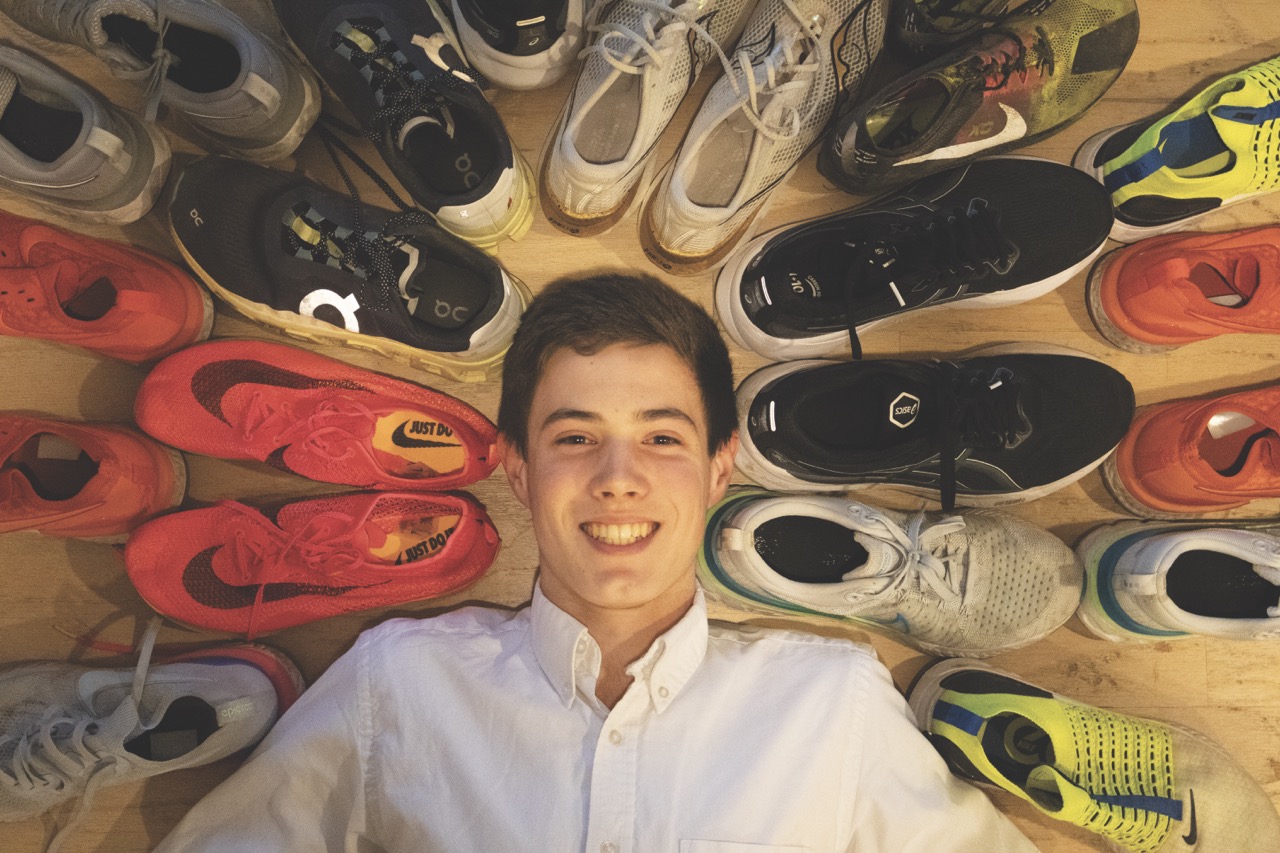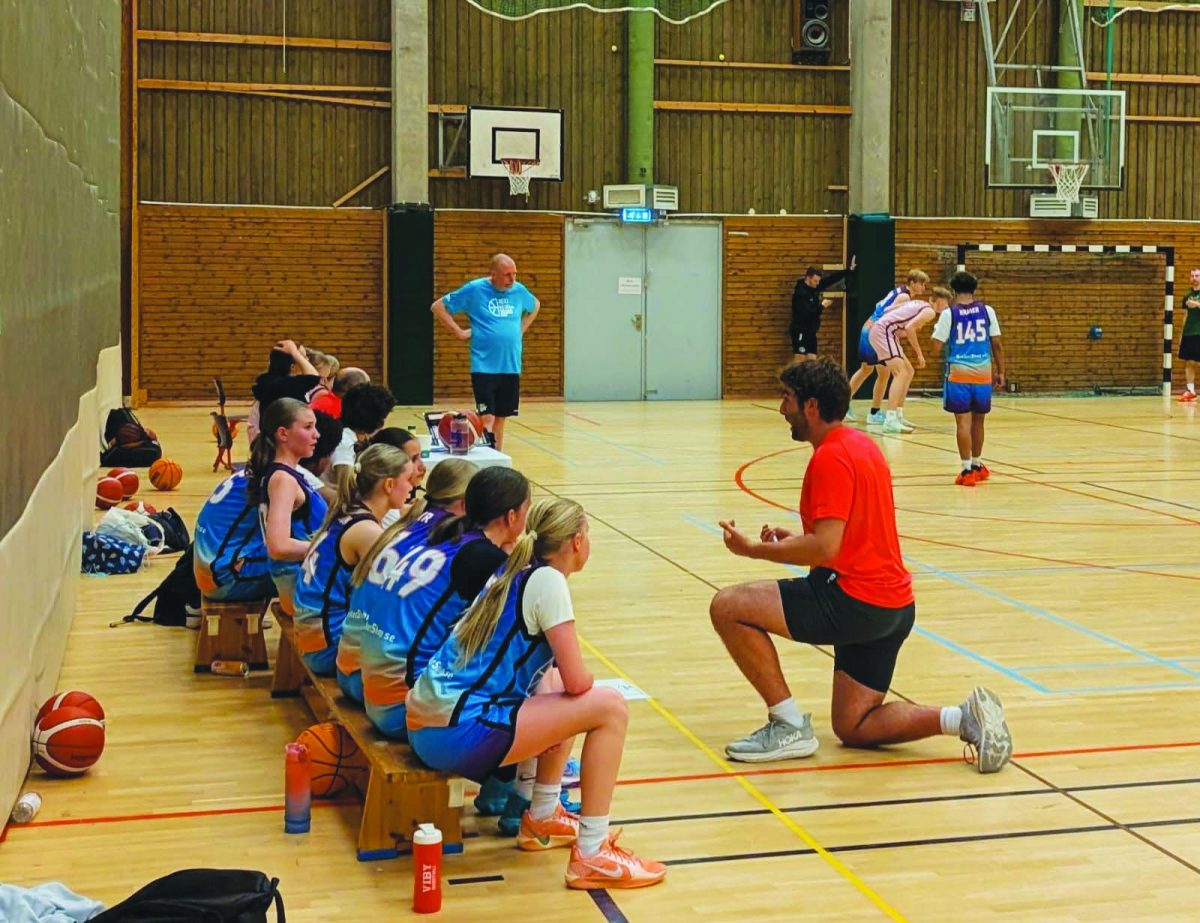While junior Noah Roby was warming up for a cross country meet, he noticed something peculiar. One of his competitors was wearing the Hoka Bondi 8’s. To the untrained eye, they look like any other shoe. But Roby knows they’re special. He called his teammate over and pointed out the other racer’s shoes like a little kid showing his parents a strange insect.
“Why is he wearing shoes for elderly women with back problems?” Roby wondered.
His teammate stood in shock, not because one of his competitors was wearing shoes for old ladies, but because Roby was able to recognize them so easily.
“Yeah, look at the heel. All of the cushioning is in the back to support joint movement,” Roby continued.
Without saying a word, his teammate just stood there, his hands on his head, questioning how Roby knew something that seemed so miniscule and random.
While some boys spend extensive amounts of time memorizing old NBA roleplayers, random baseball statistics or the best fantasy football players, Roby spends his free time learning about running shoes. His fascination stems from being a runner himself, but he was not always interested in footwear.
In fifth grade, he started his running career at the Turkey Trot race over Thanksgiving, earning a 2nd place finish for his age group. He got hooked on the rush he got from racing others, overtaking them and crossing the finish line. His passion for the sport continued to grow, leading to Roby’s signing up for a club team.
“It was the summer before seventh grade,” Noah Roby said. “I was invited to this track club which is now called Caliber Athlete. By eighth grade, I was all in. I was training probably five, six or seven days a week. I decided to quit tennis and go all in on running.”
His increased training regimen led to a series of small nagging injuries. After consulting his coach about his injuries, Roby was asked about his shoes. As soon as he changed his footwear, his pain disappeared. Once he realized the importance of proper running shoes, he went down a rabbit hole.
“I watched a lot of YouTube, and running dominated a lot of the content I was watching,” Roby said. “With that came shoes, because at that time, the marathon world record was broken using these new carbon-plated shoes that were everywhere in the media.”
The science behind the famous world-record-breaking shoes caught Roby’s attention. The padding, shoe structure and materials all factored into creating revolutionary footwear. Over the summer, Roby worked at the running-shoe store, Feet Fleet. Roby learned all about the different types of shoes and what they were made for.
“What you want depends on what you’re using it for,” Roby said. “If you’re using the shoes for a slow, easy mile or longer run, then you want normal foam to make you more comfortable and enjoy running in it. If you are looking for faster runs, or speed sessions, then you’d want the most responsible shoe possible: the shoe that gives the most bounce back when you put it into the ground.”
In the past, shoe manufacturers designed competitive footwear to be as light as possible. However, through extensive research by shoe engineers and experts at places like Nike, opposite conclusions were found. As a result, shoe technology has surged in recent years.
“What people have discovered is the more foam you put in, especially responsive foam, the more energy return and bounce you are going to get out [after striking the ground],” Roby said. “Since they’ve discovered carbon-plated shoes and carbon energy rods, there have been massive improvements. The first one to do that was the Nike Alpha Fly which was a huge revolutionary technology.”
The results of the advancements have been apparent on world records and personal record times around the world. For the past few years, it seems like every race has someone breaking a record in a new shoe. This phenomenon has upset some members of the running community. The steep price and the inherent unfairness to runners without the new technology has led to regulations and changes from global and national organizations.
“It’s been pretty controversial, but (the governing organizations) have to allow these shoes to improve because, otherwise, running shoe companies like Nike or Adidas are not going to make money if they all have to use the same shoes,” Roby said. “As soon as Nike released the Alphafly, all these other running shoe companies started releasing their own carbon plated shoes.”
With continuing advancements in shoe technology coming year after year, and price increases following the same trend, it seems like records are getting broken by technology rather than humanity.
“I think this shoe technology is great, but shoes are becoming so much more expensive, and people are realizing the benefit that it gives you if you want to beat the world record,” Roby said.








